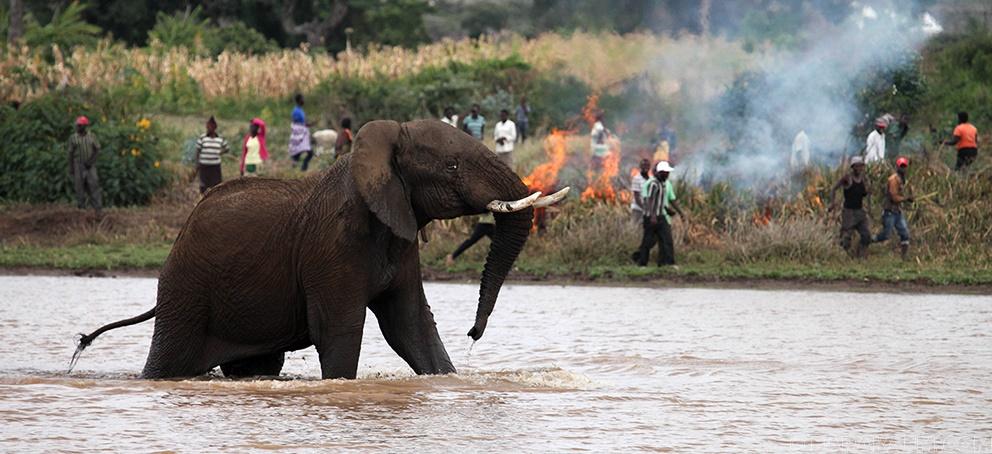
Africa’s War: Understanding the human-wildlife conflict

In some of the continent’s most wide-ranging parks, where all you can see until the tree-filled horizon is endless land, there is a violent war waging.
These seemingly untouched worlds that are synonymous with Africa, that stand as if created to be photographed – golden in the morning, deep red at night – are battlegrounds for combat between their inhabitants. Humans and wildlife.
It’s a conflict that has been around before man fought with man – captured in cave paintings and told in fireside tales. Legendary stories of struggles with sabre-toothed cats, to beating off spotted hyenas, fossil remains reveal the history of this ancient fight.
What first started as a struggle for survival, intensified through the introduction of farming and animal husbandry – greatly increasing the scope of conflict between humans and animals. Forming an abundant and easily obtainable food source for wild animals, farmland crops and produce was frequently under attack.
Wild animals would also prey on livestock, and were a source for disease. The inevitable human reaction was to eliminate such threats to their agriculture and domesticated animals.
In addition, as humans created new methods to garner food, land was converted to agricultural and other uses and forests were cleared, all of which impacted wild animals adversely.
In reaction to this, a number of animal species were eliminated locally or displaced in other parts of their natural range. These animals, once able to run free in wide-open land, were now being squeezed into a handful of game reserves and national parks. Many became extinct, others never to be the same again.
With many of Africa’s major wildlife groups under extreme threat from extinction, running parallel to an ever-expanding human population, new methods are being taken to reduce the casualty count of human-wildlife conflict.
Today, human-wildlife conflict is most concentrated and impactful within agricultural regions where human population growth has began to lapse onto animal territory. World Bank highlights that an elephant needs to eat enough roots, grasses, fruit and bark to sustain its large body. This means that an elephant can destroy a poor farmer’s livelihood in one night. Problems like this, as well as in a changing climate, are big in rural parts of Africa.
Human population growth, agricultural intensification and wealth creation has limited the living space and resources for both humans and animals, creating conflict. Animal eating preferences and migration patterns play a big role in the rivalry. People farm near water and tend to harvest in March and April, at the same time as elephants migrate to large bodies of water.
These close-encounters can often turn sour, for example the most dangerous large land animal in Africa is the hippopotamus, and direct conflicts with the creature result in around 2,900 human deaths a year. Entering these animals’ territories are often the instigator, with elephants reacting similarly to take 100 human lives a year, and lions taking around the same number.
Although, there is a huge number of wildlife killed due to the conflict. Last year, WWF reported that up to 35,000 African elephants were killed by humans – and it is thought that around 600 lions are killed annually.
As human population continues to grow and expand, it pushes wildlife further into the corner – it is a conflict that will never fully go away. But, the consequences and casualty numbers of the conflict can be mitigated, and now governments are taking measures to educate people on how best to deal with wildlife. How to safely treat them, safely turn them away, and how to create a symbiotic relationship with these creatures so that we can peacefully co-exist side-by-side.






